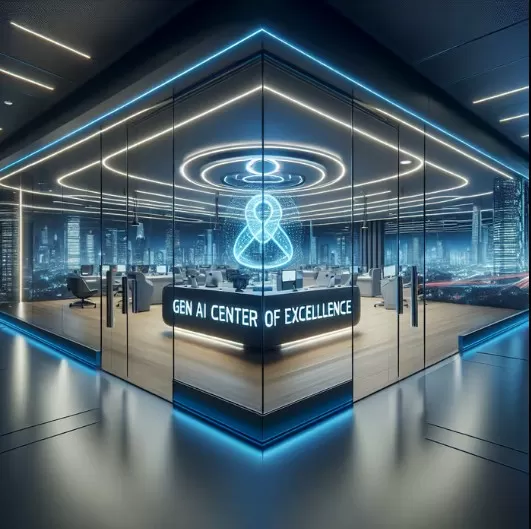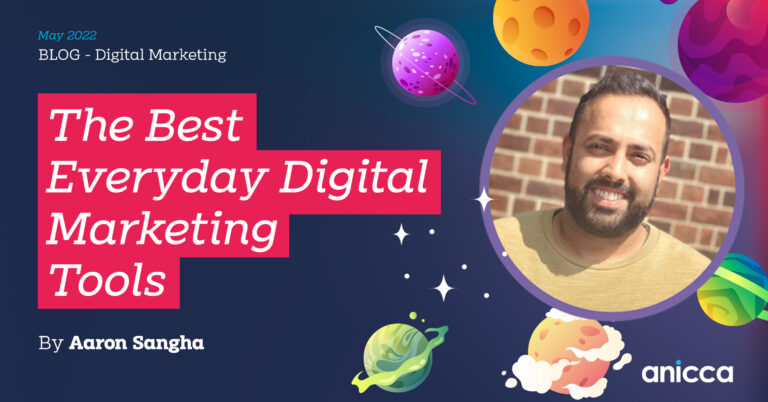Advanced AI Prompt Engineering Techniques for Marketing & Business
In the rapidly evolving world of Generative AI, prompt engineering has become a critical skill for businesses seeking to maximise the potential of large language models, and their generative AI interfaces, such as ChatGPT (OpenAI), Gemini (Google), Claude (Anthropic), Perplexity and even the up-and-coming DeepSeek.
This guide explores advanced prompting techniques that can transform how organisations leverage AI for content creation, strategic planning, and problem-solving. These techniques are essential for creating tools like CustomGPT’s, and their equivalents in each model Gems (Gemini), Projects (Claude) and Spaces (Perplexity).
We will also need advanced promoting techniques to help us build AI Agents, the next revolution in AI.
In this blog, I cover the following prompt engineering techniques:
- Getting started
- Zero-Shot Prompting
- Few-Shot Prompting
- Chain-of-Thought Prompting
- Role-Based Prompting
- Markdown Prompting
- Emotional & Style Prompting
- Rephrase and Respond Prompting
- Least-to-Most Prompting
- System 2 Attention
- Generated Knowledge Prompting
- Simulated Dialogue Prompting (Sim Tom)
- Advanced and combination techniques
- Tabular Chain-of-Thought Prompting
- Skeleton of Thought
- Self-Generated In-Context Learning
- Diverse Verifier (DiVeRSe)
- CO-STAR Framework
- Refinement techniques
- Self-Refinement
- Self-Verification
- Verification and Scoring
- Chain of Verification (COVE)
- Prompt Workflows
Understanding Prompt Engineering Techniques
Zero-Shot Prompting
Zero-shot prompting allows you to complete tasks without prior examples. It’s ideal for:
- Quick idea generation
- Initial content summaries
- Broad exploratory tasks, such as text reformatting
Characteristics:
- Straightforward approach
- Requires precise, clear input
- Works best with well-defined tasks
Example: “Summarise the key trends in digital marketing for 2024, highlighting emerging technologies and consumer behaviors.”
Few-Shot Prompting
By providing a small number of examples, you guide the AI to produce more precise outputs. Perfect for:
- Creating consistent content
- Developing specific writing styles
- Generating structured responses
Key Benefits:
- Provides context and tone guidance
- Helps AI understand nuanced requirements
- Improves output accuracy and consistency
Example: “I have provided below two product descriptions, with specific formatting and emotional tone. Using these as your guide, please recreate the third product summary to match those characteristics exactly as the first two examples”.
Chain-of-Thought Prompting
Break down complex problems into logical, step-by-step reasoning. This technique excels in:
- Strategic planning
- Solving multi-layered challenges
- Developing comprehensive workflows
- Approach:
- Deconstruct complex tasks into manageable steps
- Guide AI through logical progression
- Ensure comprehensive problem-solving
Example: “Outline a five-step process to improve customer retention in an e-commerce business: - Analyse current retention metrics
- Identify primary customer churn points
- Develop targeted intervention strategies
- Implement personalisation techniques
- Create a continuous feedback loop”
Role-Based Prompting
Assign a specific persona to the AI to generate tailored, context-specific outputs. Use cases include:
- Simulating executive decision-making
- Creating persona-driven content
- Developing targeted communication strategies
Implementation:
- Specify a precise professional role
- Provide context-specific background
- Request output aligned with that persona’s perspective
Example: “As a Chief Marketing Officer with 15 years of experience in tech industries, draft a strategic plan for launching a new AI-powered marketing tool”
Markdown Prompting
Organise responses into structured, readable formats using markdown syntax. Beneficial for:
- Creating clear, hierarchical documents
- Improving response readability
- Generating structured reports and workflows
Techniques:
- Use headers to create clear sections (markdown uses hashtags, in a similar way that we use H1 or H2 headings in HTML)
- Implement bullet points for key information
- Create nested lists for complex ideas
Example:
“# Q2 Marketing Strategy
## Objectives
– Increase brand awareness
– Improve customer engagement
## Tactics
– Launch social media campaign
– Develop targeted email marketing series”
Emotional & Style Prompting
Direct the AI to adopt specific tones or emotional perspectives. Powerful for:
- Crafting persuasive copy
- Creating empathetic communications
- Developing brand-specific messaging
Approach:
- Specify the exact emotional tone
- Provide context for the desired communication style
- Give examples of preferred language
Example: “Write an inspiring and motivational email encouraging employees to embrace innovation and sustainability practices, using a blend of compassionate and forward-thinking language”
Rephrase and Respond Prompting
Refines input by rephrasing for improved clarity and understanding. Ideal for:
- Clarifying ambiguous or complex queries
- Improving communication precision
- Ensuring accurate interpretation of intent
Techniques:
- Break down complex questions
- Reframe initial prompt for greater specificity
- Verify understanding before generating response
Example: “Rephrase this marketing brief to highlight the most critical objectives and remove any ambiguous language. Ensure the rephrased version is crystal clear and actionable.”
Least-to-Most Prompting
Systematically builds complexity by starting with simple tasks and progressively advancing. Beneficial for:
- Incremental problem-solving
- Structured learning approaches
- Complex workflow development
Approach:
- Begin with foundational elements
- Gradually increase task complexity
- Build understanding through progressive steps
Example:
“Using the attached campaign description:
- Identify core marketing campaign objectives
- Develop initial targeting strategy
- Create detailed channel-specific tactics
- Design comprehensive implementation plan
- Build adaptive measurement and optimisation framework”
System 2 Attention
Focuses on deliberate, objective reasoning by separating facts from subjective inputs. Powerful for:
- Unbiased analysis
- Critical thinking
- Eliminating emotional or intuitive bias
Key Characteristics:
- Emphasises logical, systematic approach
- Encourages deliberate information processing
- Minimises impulsive or emotional decision-making
Example: “Conduct an objective analysis of our marketing performance, focusing solely on quantifiable metrics and removing any subjective interpretations.”
Generated Knowledge Prompting
Combines existing information to create novel insights and actionable strategies. Useful for:
- Innovation generation
- Strategic opportunity identification
- Knowledge synthesis
Methodology:
- Aggregate existing data points
- Identify potential connections
- Generate unique perspectives and recommendations
Example: “Analyse our current sales data, market trends, and customer feedback to suggest three innovative product development opportunities.”
Simulated Dialogue Prompting (SimTom)
The name Sim Tom is derived from “Simulation Theory of Mind”.
It is used to create multi-step, realistic conversational scenarios for training and strategic planning. Applications include:
- Sales training
- Client interaction simulations
- Conflict resolution strategies
Implementation:
- Define clear participant roles
- Establish specific conversation objectives
- Create realistic interaction scenarios
Example: “Simulate a negotiation between a sales representative and a potential enterprise client, focusing on overcoming pricing objections and demonstrating value.”
Tabular Chain-of-Thought Prompting
Structures complex reasoning and processes in a clear, organised table format. Beneficial for:
- Project planning
- Strategic analysis
- Workflow documentation
Approach:
- Break down processes into discrete steps
- Use columns to represent different analysis dimensions
- Provide clear, structured reasoning progression
Example: “Create a marketing calendar for our new pet food launch, with weeks in the columns, and each channel and content idea in the rows”
Skeleton of Thought
Develops a high-level framework that can be systematically expanded into comprehensive content. Useful for:
- Content creation
- Strategic planning
- Structured ideation
Techniques:
- Start with core conceptual outline
- Progressively add depth and detail
- Maintain logical flow and coherence
Example: “Draft a preliminary outline for a comprehensive report on AI’s impact on marketing strategies, focusing on key structural elements.”
Self-Generated In-Context Learning
Enables AI to create its own examples and refine understanding autonomously. Valuable for:
- Persona development
- Audience segmentation
- Adaptive learning approaches
Methodology:
- Generate initial baseline examples
- Iteratively refine and improve
- Create nuanced, context-specific insights
Example: “Develop multiple audience personas for a luxury homewear brand, demonstrating deep understanding of potential customer motivations and behaviors.”
Diverse Verifier (DiVeRSe)
Explores multiple solution paths and rigorously evaluates their potential effectiveness. Critical for:
- Strategic decision-making
- Campaign strategy development
- Risk mitigation
Approach:
- Generate multiple solution alternatives (ideation)
- Apply systematic evaluation criteria (scoring)
- Select optimal strategy based on comprehensive analysis (application)
Example: “Propose three distinct marketing campaign strategies for a new product launch, comprehensively evaluating each approach’s potential success.”
CO-STAR Framework
Structures prompts using Context, Objective, Style, Tone, Audience, and Response format. Ideal for:
- Creating comprehensive briefs
- Ensuring strategic alignment
- Developing targeted communications
Components:
- Clearly define contextual background
- Specify precise objectives
- Establish desired communication style
- Target specific audience segments
Example: “Develop a social media campaign brief for a sustainable fashion brand, targeting environmentally conscious millennials with an inspirational and authentic tone.”
Understanding Refinement Techniques
Self-Refinement
Iteratively improve outputs by:
- Identifying content gaps
- Addressing potential weaknesses
- Adding depth to initial responses
Approach: Request the AI to review and improve its initial output, focusing on specific areas of enhancement.
Verification Frameworks
Evaluate AI-generated content using:
- Market validation criteria
- Feasibility assessments
- Risk analysis
- Potential impact scoring
Approach: Systematically score and verify outputs across multiple strategic dimensions.
Verification and Scoring Framework
Breaks evaluation into structured components to assess AI-generated content systematically:
- Market validation criteria
- Feasibility assessment
- Risk analysis
- Potential impact scoring
Key Benefits:
- Provides quantitative assessment of strategies
- Enables objective comparison of different approaches
- Helps prioritise initiatives based on multiple dimensions
Example: “Score these campaign ideas across market potential, implementation complexity, and expected ROI using a 1-10 scale.”
Chain of Verification (COVE)
An iterative approach to refining and validating AI-generated responses:
- Generate initial baseline content
- Pose critical verification questions
- Systematically refine answers
- Validate underlying assumptions
Methodology:
- Challenge initial outputs
- Seek evidence-based improvements
- Ensure comprehensive and reliable results
Example: “Evaluate this business strategy proposal by questioning each assumption, identifying potential risks, and suggesting refinements.”
Prompt Workflows
Utilise structured markdown or formatted prompts to organise and execute complex outputs:
- Create hierarchical document structures
- Define clear objectives and steps
- Maintain systematic approach to complex tasks
Implementation Techniques:
- Use markdown headers
- Create nested lists
- Define clear progression of ideas
Example:
# Annual Marketing Strategy
## Objectives
– Increase market share
– Improve customer engagement
## Tactical Steps
- Conduct market research
- Develop targeted campaigns
- Implement measurement framework
Table summarising these prompting techniques
| Technique | Primary Use | Key Characteristics | Example Scenario |
| Zero-Shot Prompting | Quick idea generation, broad summaries | No prior examples, requires precise input | Summarising market trends without specific guidance |
| Few-Shot Prompting | Creating consistent content, specific styles | Provides small number of examples for context | Writing product descriptions matching a specific tone |
| Chain-of-Thought Prompting | Complex problem-solving, strategic planning | Breaks tasks into logical step-by-step process | Developing a comprehensive customer retention strategy |
| Role-Based Prompting | Persona-driven content, specialised perspectives | Assigns specific professional role or persona | Drafting a marketing plan from a CMO’s viewpoint |
| Markdown Prompting | Structured document creation | Organises responses using markdown syntax | Creating hierarchical marketing strategy documents |
| Emotional & Style Prompting | Crafting persuasive, targeted communications | Specifies specific tone and emotional approach | Writing motivational internal communications |
| Rephrase and Respond Prompting | Clarifying complex queries | Refines and rephrases input for clarity | Improving ambiguous marketing briefs |
| Least-to-Most Prompting | Incremental problem-solving | Builds complexity progressively | Developing a marketing campaign from basic to advanced stages |
| System 2 Attention | Objective analysis, critical reasoning | Separates facts from subjective inputs | Conducting unbiased performance evaluations |
| Generated Knowledge Prompting | Innovation, strategic insights | Combines existing information creatively | Identifying new product opportunities from sales data |
| Simulated Dialogue Prompting | Training, scenario planning | Creates multi-step conversational scenarios | Conducting mock sales negotiations |
| Tabular Chain-of-Thought Prompting | Structured analysis, workflow documentation | Organises reasoning in table format | Analysing marketing campaign performance |
| Skeleton of Thought | Content framework development | Creates high-level outline for expansion | Drafting initial report structures |
| Self-Generated In-Context Learning | Persona development, adaptive learning | AI generates and refines its own examples | Creating detailed audience personas |
| Diverse Verifier (DiVeRSe) | Strategic decision-making | Explores multiple solution paths | Evaluating multiple campaign strategies |
| CO-STAR Framework | Comprehensive brief creation | Structures prompts with context, objectives, style | Developing targeted social media campaign briefs |
Refinement Techniques
| Technique | Primary Purpose | Key Method | Application |
| Self-Refinement | Improving initial outputs | Iterative gap identification | Enhancing marketing strategies |
| Self-Verification | Validating response accuracy | Evidence-based metrics review | Verifying strategic proposals |
| Verification and Scoring | Systematic output evaluation | Scoring across multiple dimensions | Prioritising marketing initiatives |
| Chain of Verification (COVE) | Comprehensive response refinement | Iterative questioning and improvement | Validating strategic assumptions |
| Prompt Workflows | Complex output organisation | Structured prompt formatting | Creating detailed operational plans |
Key Takeaways
- Prompt engineering is a skill that requires practice and experimentation
- No single technique works perfectly for every scenario
- Combine multiple approaches for optimal results
- Continuously refine and adapt your prompting strategy
By mastering these advanced prompt engineering techniques, businesses can unlock unprecedented levels of AI-assisted creativity, strategic insight, and operational efficiency.
More resources
Watch some of these techniques in action – links to webinars
If you would like to see how I have used some of the simpler prompting techniques – then check out these webinars:
- How to use ChatGPT in your marketing job and tips on practical prompting https://anicca.co.uk/resources-webinars/how-to-use-chatgpt-in-your-marketing-job-and-tips-on-practical-prompting/
- AI on Steroids-Designing Your First Custom GPT for Advanced Performance
https://anicca.co.uk/resources-webinars/ai-on-steroids-designing-your-first-custom-gpt-for-advanced-performance/
If you are interested in practical training or consultancy on how you can utilise ChatGPT or other Generative AI strategies in your marketing and business, then email Ann Stanley at [email protected]






